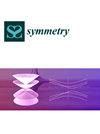A Secure Trajectory Planning Method for Connected Autonomous Vehicles at Mining Site
IF 2.2
3区 综合性期刊
Q2 MULTIDISCIPLINARY SCIENCES
引用次数: 0
Abstract
Recently, with the assistance of 5G networks and the Internet of Things, specialized applications of autonomous driving to mining sites have been explored, with the goal of realizing the unmanned operation of mining systems and enhancing the safety of the mining industry. After receiving the loading task, the autonomous driving system will generate a feasible trajectory for the mining truck. It requires that the trajectory be generated in advanced within a limited-time high-latency network. In addition, the secure trajectory planning for mining sites involves factors in the complex environment and an unstable network. Thus, a secure trajectory planning method for autonomous trucks at mining sites is proposed. It simplifies the planning by decoupling the planning into front-end path searching and back-end trajectory generation. First, the planner enhances the Hybrid A* search algorithm to find the hauling path within the boundary of the mining site, and then, it post-processes the path with a well-designed symmetric optimization-based method. Then, considering the interaction with other autonomous trucks, a topology-guided search method for secure decision making is proposed, considering the possibility of cybersecurity. The proposed method was validated in real scenarios of the mining environment. The results verify that the planner can generate the secure trajectory under network delay 2.0 s conditions.矿区联网自动驾驶车辆安全轨迹规划方法
最近,在5G网络和物联网的辅助下,探索了自动驾驶在采矿现场的专门应用,目的是实现采矿系统的无人操作,提高采矿业的安全性。自动驾驶系统接收装载任务后,为矿用卡车生成可行的轨迹。它要求在有限时间的高延迟网络中提前生成轨迹。此外,矿山安全轨迹规划还涉及复杂环境和不稳定网络等因素。在此基础上,提出了矿区自动驾驶卡车安全轨迹规划方法。将规划解耦为前端路径搜索和后端轨迹生成,简化了规划过程。该规划器首先对Hybrid A*搜索算法进行改进,找到矿区边界内的牵引路径,然后对路径进行基于对称优化的后处理。然后,考虑到与其他自动驾驶卡车的交互,考虑到网络安全的可能性,提出了一种拓扑引导的安全决策方法。该方法在采矿环境的实际场景中得到了验证。结果验证了规划器在网络时延2.0条件下能够生成安全轨迹。
本文章由计算机程序翻译,如有差异,请以英文原文为准。
求助全文
约1分钟内获得全文
求助全文
来源期刊

Symmetry-Basel
MULTIDISCIPLINARY SCIENCES-
CiteScore
5.40
自引率
11.10%
发文量
2276
审稿时长
14.88 days
期刊介绍:
Symmetry (ISSN 2073-8994), an international and interdisciplinary scientific journal, publishes reviews, regular research papers and short notes. Our aim is to encourage scientists to publish their experimental and theoretical research in as much detail as possible. There is no restriction on the length of the papers. Full experimental and/or methodical details must be provided, so that results can be reproduced.
 求助内容:
求助内容: 应助结果提醒方式:
应助结果提醒方式:


